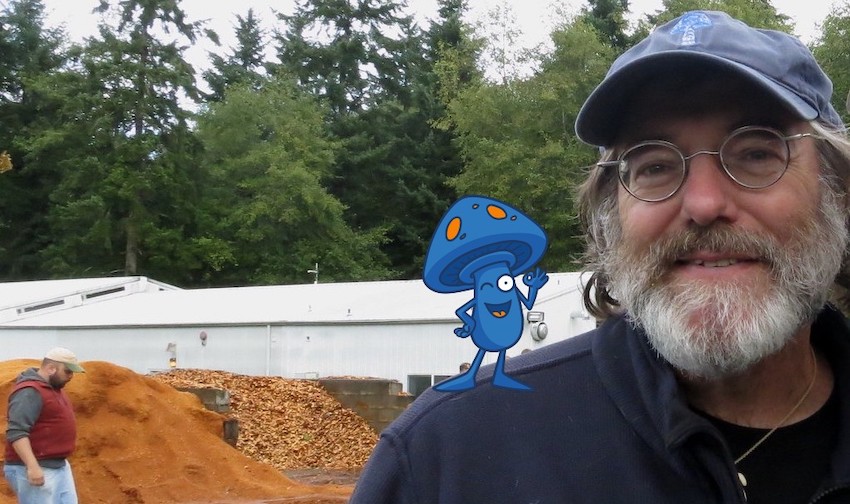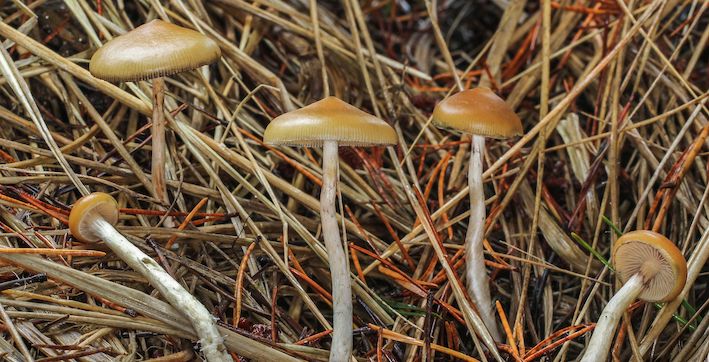Introducing The Psilocybe stametsii
The Psilocybe stametsii mushroom was discovered in the Los Cedros Biological Reserve in Ecuador. Initially it was discovered in a cloud forest on the reserve in 2011 by Dr. Bryn Dentinger, and colleagues, from the University of Utah. Eleven years later it was found again in the same location by Giuliana Furci, musician Ciosmo Sheldrake, and author Robert Macfarlane.
Giuliana Furci, when co-publishing her discovery, had this to say;
“It is an absolute joy to be able to honor Paul Stamets with a new species of mushroom. “His contribution to the global appreciation of fungi is undisputed and unparalleled. His relentless dedication to advancing mycology has inspired thousands of people around the world for decades, including myself.”
The discovery was published on the Index Fungorum e-publishing tool, which is hosted by the Royal Botanical Gardens in Kew. This new approach speeds up and streamlines the classification of new species by bypassing the traditional slow-paced process of scientific journal publishing. This cutting-edge method makes identifying new species far quicker.

‘The greatest honor a mycologist can receive…’
Stamets himself had this to say about his tribute;
“I am deeply honored by this recognition – and excited to go on a field expedition to see this species in its natural habitat…. To be recognized like this is the greatest honor that a mycologist can receive.. That two renowned mycologists co-authored this discovery deepens my appreciation. I also feel a keen responsibility to further protect the mycodiversity of fungi in all their wondrous forms. They are truly fantastic!”
And, Stamets has also been on the other side of this process. In 1997, he published his discovery of a new psilocybin mushroom, and named it after one of his idols, Dr. Andrew Weil. It was christened the Psilocybe weilii. It’s a kind of pay-it-back process it seems! Additionally, Stamets also discovered another psilocybin mushroom in 1995 that he named Psilocybe azurescens. This time azure was in reference the bright blue color the mushroom bruises, rather than a person.

Stamets is also the author of many instructional books which teach the cultivation of both psychedelic and functional mushrooms. These books remain the authority and one of the most esteemed references for mushroom growth and cultivation.
So, Psilocybe stamestii — What Are its Stats?
The Psilocybe stametsii, according to Dr. Bryn Dentinger, is pretty small in size, not much taller than a matchstick, and is usually found alone. It is of the same tawny brown tones of other wild psilocybin mushrooms — all the better to camouflage with the terrain of leaves and soil. However, the Psilocybe stametsii stands out beside its other Psilocybe cousins due to its sharply pointed cap. Interestingly, the species is closest in relation phylogenetically to an environmental DNA sequence from soil found in China. It differs evolutionarily when compared with other species of Psilocybe identified in Mexico, Bolivia and Puerto Rico.
The Psilocybe stametsii joins more than 116 species under the genus Psilocybe that have been found so far. As well as new mushrooms being discovered, new uses for their mind-altering powers are being uncovered too. Psilocybin, the psychoactive ingredient in Psilocybe mushrooms and truffles, is currently being researched as an effective treatment for depression and anxiety, among other mental health conditions. It is thought it may also prove effective in warding off neuropathies such as Alzheimer’s disease and dementia.
Stamets Fungi Advocacy Continues
Stamets himself has long been an advocate for the multiple benefits that fungi can offer. Very recently a patent which he had been waiting for for six and a half years to be filed was finally published. The patent explores how specific combinations of psilocybin could have the ability to improve both mental health and neurogenesis. Additionally, Stamets co-authored a recent study that found that microdosing psilocybin may increase mental clarity and improve mood, when compared with non-microdosers. And, for Stamets this is just recent work — his career and advocacy for all things fungi has spanned 40 years.

The journey of Paul Stamets and the discovery of Psilocybe stametsii are testaments to the profound wonders of fungi. Stamets’s relentless passion and dedication have not only unveiled hidden treasures within the fungal world but also opened doors to novel avenues of scientific exploration and human well-being. As research on psilocybin’s therapeutic potential expands, Stamets’s advocacy for mushrooms continues to inspire breakthroughs in the field of mycology. With each discovery, we are reminded that the depths of nature’s marvels are boundless, promising more and more possibilities for our understanding of the natural world and the potential benefits it holds for humanity.
So welcome to the world, little Psilocybe stametsii!





